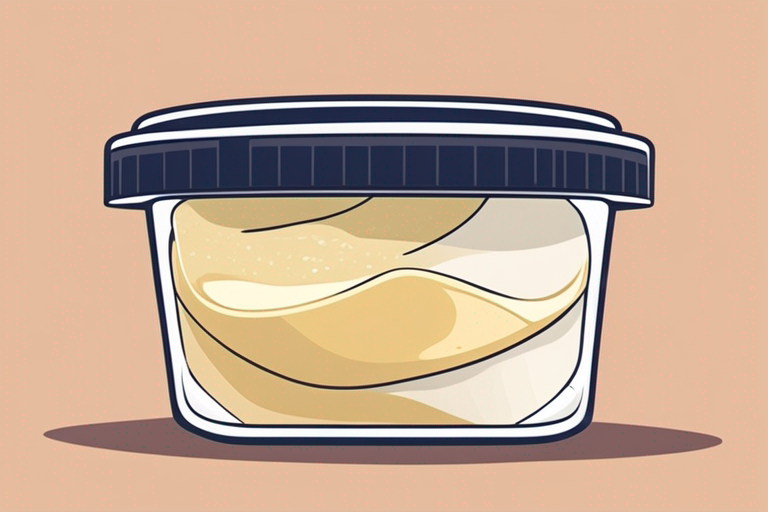
Is Expired Cream Cheese Safe to Eat?
Get Your Free Food Safety Cheat Sheet
30 most common foods with instant answers. Print it and stick it on your fridge—completely free!
Is Expired Cream Cheese Safe to Eat?
Cream cheese is a versatile and delicious dairy product that is commonly used in both sweet and savory dishes. However, like all perishable foods, cream cheese can go bad if not stored properly or if it is past its expiration date. In this blog post, we will discuss whether expired cream cheese is safe to eat, how to tell if cream cheese has gone bad, and provide tips on proper storage to maximize its shelf life.
Understanding Expiration Dates on Cream Cheese
Cream cheese typically comes with a "sell-by" or "use-by" date stamped on the packaging. It's important to understand the difference between these dates:
- Sell-By Date: This date is a guide for retailers to know how long to display the product for sale. It is not a safety date.
- Use-By Date: This date is the manufacturer's recommendation for when the product should be consumed for the best quality.
It's essential to note that these dates are not strict deadlines, and the cream cheese may still be safe to eat after the expiration date, depending on how it has been stored.
Signs of Spoiled Cream Cheese
While cream cheese can last beyond its expiration date, it is crucial to be able to recognize signs of spoilage to ensure food safety. Here are some indicators that your cream cheese may have gone bad:
Visual Signs:
- Mold: Any visible mold on the surface of the cream cheese is a clear indication that it is spoiled.
- Discoloration: Cream cheese that has turned yellow or has dark spots should be discarded.
- Unusual Texture: If the cream cheese has become slimy or sticky, it is no longer safe to eat.
Smell and Taste:
- Off Odor: Spoiled cream cheese may have a sour or rancid smell.
- Off Taste: If the cream cheese tastes sour or has an unpleasant flavor, it is best to throw it away.
Safety Guidelines for Consuming Expired Cream Cheese
If your cream cheese is past its expiration date but shows no signs of spoilage, you may still wonder if it is safe to eat. Here are some safety guidelines to consider:
- Check for Signs of Spoilage: Inspect the cream cheese for any visible mold, unusual texture, off odor, or off taste before consuming.
- Trust Your Instincts: If you are unsure about the safety of the cream cheese, it is best to err on the side of caution and discard it.
- Consider How It Was Stored: Cream cheese that has been stored properly in the refrigerator is more likely to last longer past the expiration date.
Proper Storage Tips for Cream Cheese
To extend the shelf life of your cream cheese and ensure its quality, follow these storage tips:
- Refrigerate Promptly: Always refrigerate cream cheese promptly after use.
- Store at the Right Temperature: Keep cream cheese at a constant temperature of 40°F or below.
- Keep it Sealed: Store cream cheese in its original packaging or an airtight container to prevent it from absorbing odors from other foods.
- Use Clean Utensils: Always use clean utensils to scoop out cream cheese to prevent contamination.
Conclusion
In conclusion, while it is generally safe to consume cream cheese after its expiration date, it is essential to check for signs of spoilage before eating it. By understanding expiration dates, recognizing the signs of spoiled cream cheese, and following proper storage guidelines, you can enjoy your cream cheese safely and deliciously. Remember, when in doubt, it's best to throw it out to avoid the risk of foodborne illness.

Authoritative Food Safety References
These agencies and university labs inform every tip and health precaution we publish.
USDA FoodKeeper – Cold Storage Guidelines
Official refrigerator, freezer, and pantry timelines maintained by the U.S. Department of Agriculture.
Visit USDA FoodKeeperFDA Produce Safety Rule & Grower Guidance
Field-to-fridge handling practices that prevent contamination of fruits, vegetables, and leafy greens.
Visit FDA Produce SafetyCDC Foodborne Illness Prevention Hub
Surveillance-backed guidance on pathogens, symptoms, and steps to reduce foodborne illness risk.
Visit CDC Food SafetyUC Davis Postharvest Technology Center
University research detailing optimal storage atmospheres for produce after harvest.
Visit UC Davis PostharvestPenn State Extension – Home Food Preservation & Safety
Peer-reviewed extension bulletins on safe canning, chilling, and reheating practices.
Visit Penn State ExtensionCan you eat expired cream cheese?
How long does cream cheese last past the expiration date?
How can I tell if cream cheese has gone bad?
Can you freeze cream cheese to extend its shelf life?
Is it safe to consume cream cheese that has been left out at room temperature?
Get Your Free Food Safety Cheat Sheet
30 most common foods with instant answers. Print it and stick it on your fridge—completely free! Want more? Upgrade to the complete guide with 70+ foods.
Scan your food directly and get instant safety info using our AI-powered camera feature.